Obendorf, situated in the verdant Neckar Valley in the bosom of Germany’s Baden-Wurttemberg, surrounded by the Black Forest, has a long and celebrated relationship with Birmingham, London and Britain’s premier rifle makers that dates back to the release of Paul Mauser’s brilliant bolt-action design of 1898.
Since Mauser first did deals with Westley Richards and John Rigby to supply them with rifles, carbines and pistols and work with them as British agents, the fact that ‘Obendorf’ was stamped on the action indicated a first-class original was at the heart of a magazine rifle.
The beauty of a magazine rifle to the early 20th century customers of British gunmakers was twofold. First, the ability to fire three, four, or more (depending on calibre) shots in quick succession and second, the fact that a high quality Mauser cost about half what a good double rifle did.
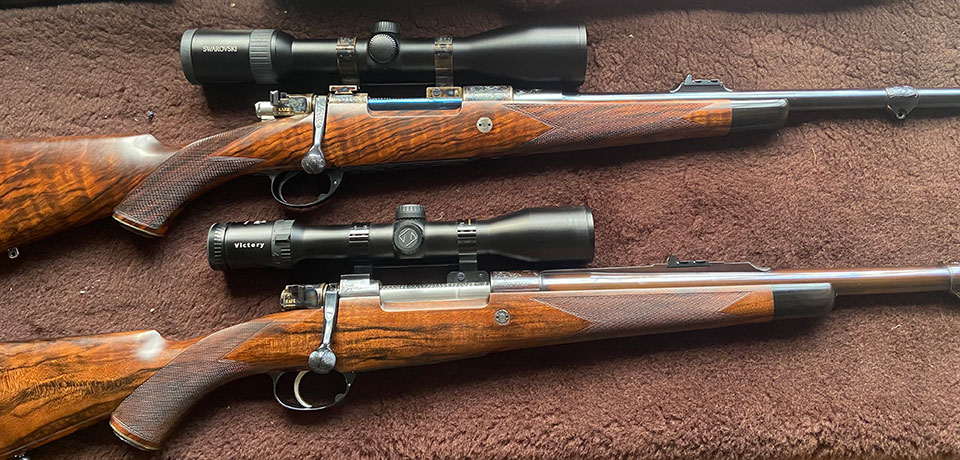
This development coincided with a proliferation of smaller-calibre, yet powerful, cartridges powered by the ever-improving nitro-cellulose powders that were quickly replacing black powder. Small calibre magazine rifles took-off in a big way.
The M98 served as a military action and a civilian one, although civilian contracts with British gunmakers were interrupted by war, twice. Before 1939, Rigby-Mausers and Mauser action rifles bearing several British maker’s names were sold in large numbers and could be fond inaction all over the world.
As rifle-makers and sportsmen experimented, new cartridges , suited to magazine rifles began to emerge and the Mauser actions were made in different sizes to accommodate lighter or heavier rounds. The first Magnum action was launched by Mauser after a request made by Rigby to allow for a .350 version of the popular .275 to be made.
In the years following the Second World War, many moth-balled military surplus rifles were bought by the trade and the actions re-purposed by British rifle makers to build hunting rifles. As these ran out, new-build Mauser ’98 actions were created for the trade by British engineering firms like Medwell & Perrett.
Today, Rigby and Westley Richards build their new rifles on new Mauser actions but until quite recently Westley Richards was still building some rifles on original Oberndorf actions and for some collectors and sportsmen, a rifle with an original action represents something a little special.
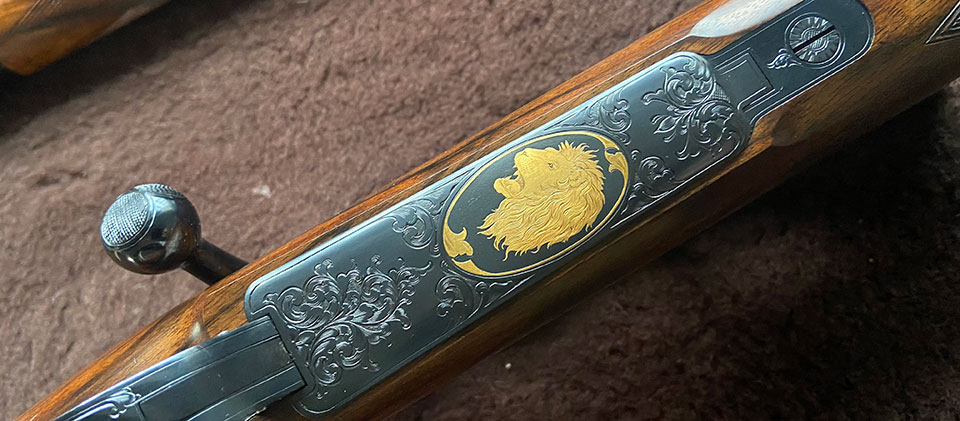
The Westley Richards rifles pictured here are examples of just that. The larger is a .416 Rigby, built on a Magnum Mauser action and the smaller a .300 Holland & Holland Magnum, built on a Standard Mauser action. Both actions have the magic ‘Oberdorf’ stamp on the side.
Both are best quality, built to order, for one customer, some fifteen years ago. The actions may be standard but the rifles have been crafted without compromise. Though embellishment is clearly evident, it is tastefully contained within the glossy black of the steel surrounding it.
The .300 H&H features case colour-hardening on the bolt and the custom-made Holland & Holland type quick-detach mounts, which suit the action.
Nowadays, these rifles would be built on new double square bridge Mauser actions, which facilitate ‘scope mounting, and Westley Richards use a new type of quick-detach mounts with these.
The engraving, by Peter Spode, is lovely but un-fussy. It lifts the rifles and marks them out as a level above most others but it does not compromise their suitability for using properly, getting a few scratches on and crawling around on the hill with. Even the gold inlaid lion’s head on the .416 is somehow purposeful.
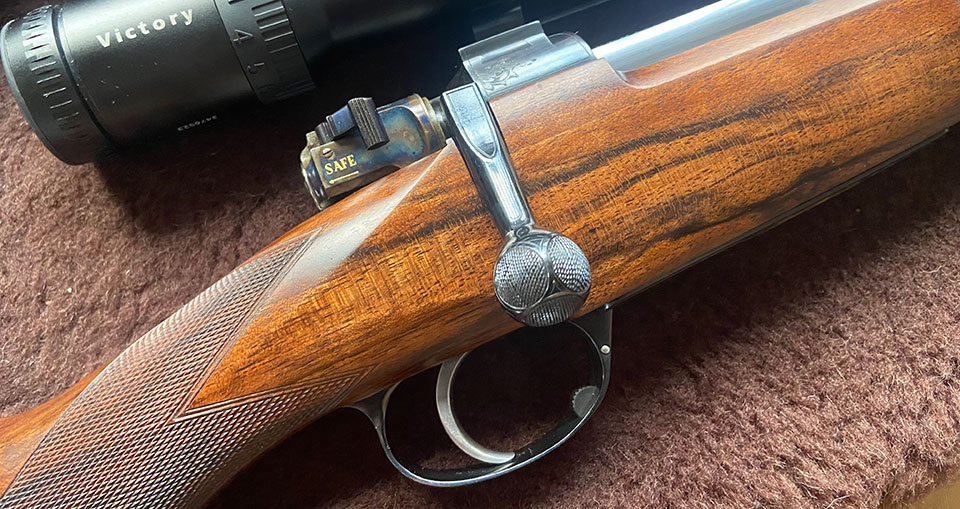
The first impression is of nice rifles one would like to own and use, rather than that of contemplating exhibition pieces that are too precious to get dirty.
The chosen calibres are classics. The .416 Rigby is a rugged and dependable big-game killer that is a favourite of professional hunters all over Africa. Devised as a speciality magazine rifle cartridge in the early years of the concept, it packs a punch with its 400-grain bullet travelling at up to 2,400 fps and is capable of tackling any of the big five, including elephant.
The .300 Holland & Holland Magnum is another belted case that was launched a little over a decade after the .416 Rigby, in 1925. Originally called the ‘Holland Super-Thirty’, it was loaded with Cordite.
However, with the introduction of better nitro powders it grew to push a 200 grain bullet at up to 2,913 fps and is adequate for all plains game in Africa, up to buffalo in size. It’ forte is the hunting of medium plains game, large deer, and bears.
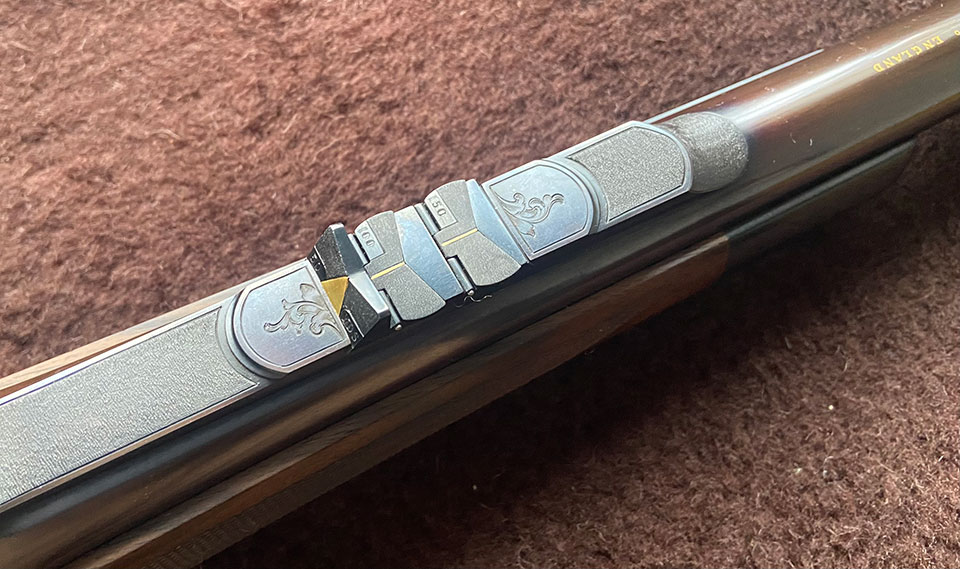
Both rifles have beautifully figured walnut stocks with pistol hands and cheek-pieces, steel grip-caps, with traps, and ebony finials to the fore-stock.
Westley Richards today prides itself on producing around 25 guns and rifles per annum and delivering exemplary quality, with attention to the smallest detail.
These rifles were among the last of the best British custom rifles to be built on original Obendorf Mauser actions and they signal a particular pivot point in British rifle building history. They already look like classics to me.
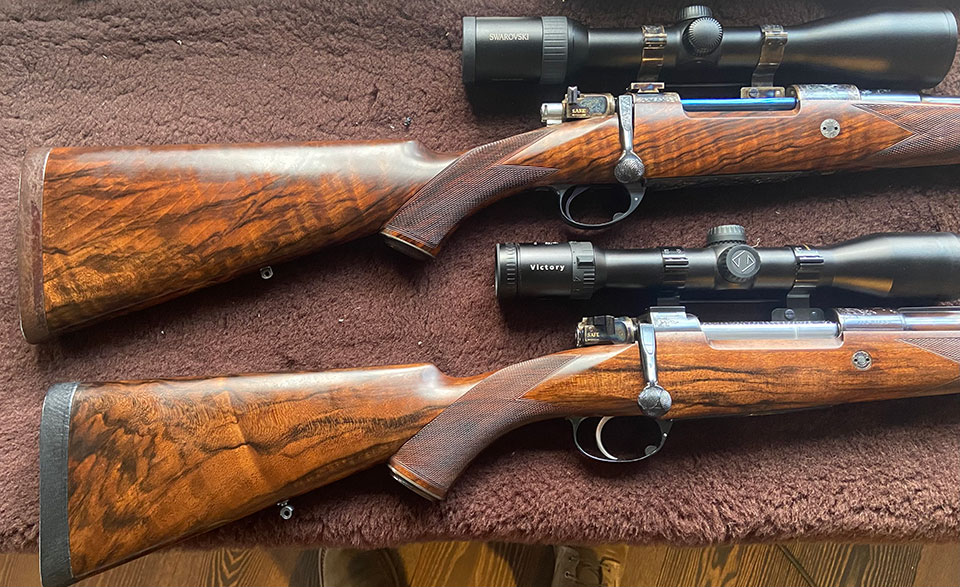
Published by Vintage Guns Ltd on (modified )




